
Toyota's Chief Software Officer Keiji Yamamoto visited a small town in Iwate Prefecture to see dealer-led initiatives to address issues of a depopulated area with elderly residents. The visit made clear that many things cannot be solved overnight, but Yamamoto learned of some hints at the genba.

“Non-temporary support” is how Toyota describes its commitment to the Tohoku region ever since the devastating Great East Japan Earthquake in 2011. Each year the region is visited by President Akio Toyoda, but this spring, as it marks the 10th anniversary from the earthquake, many other Toyota executive officers visited Tohoku. One example Toyota Times already covered is the visit by Chief Technology Officer (CTO) Masahiko Maeda in Fukushima.
Making the journey to Tohoku this time was Chief Software Officer (CSO) Keiji Yamamoto, who also serves as President of Connected Company, one of the in-house companies at Toyota which aims to bring greater connectivity to vehicles throughout the world. The purpose of his visit was to see at first-hand the initiatives being promoted as part of “best-in-town” activities in Japan.
These are activities that Toyota has been promoting together with its dealers around the country, aiming to become not “best in the world” or “best in Japan,” but rather to become the most trusted store in town, and in so doing become a company that local residents rely on most.
Around 110,000 staff at the approximately 6,000 dealerships throughout Japan are all working to deepen bonds with people in town and become a well-established local presence in each community.
On this visit, Yamamoto travelled to Kuzumaki Town in Iwate Prefecture. He was accompanied by Toyota Times reporter Kyonosuke Morita, who reported on the visit.
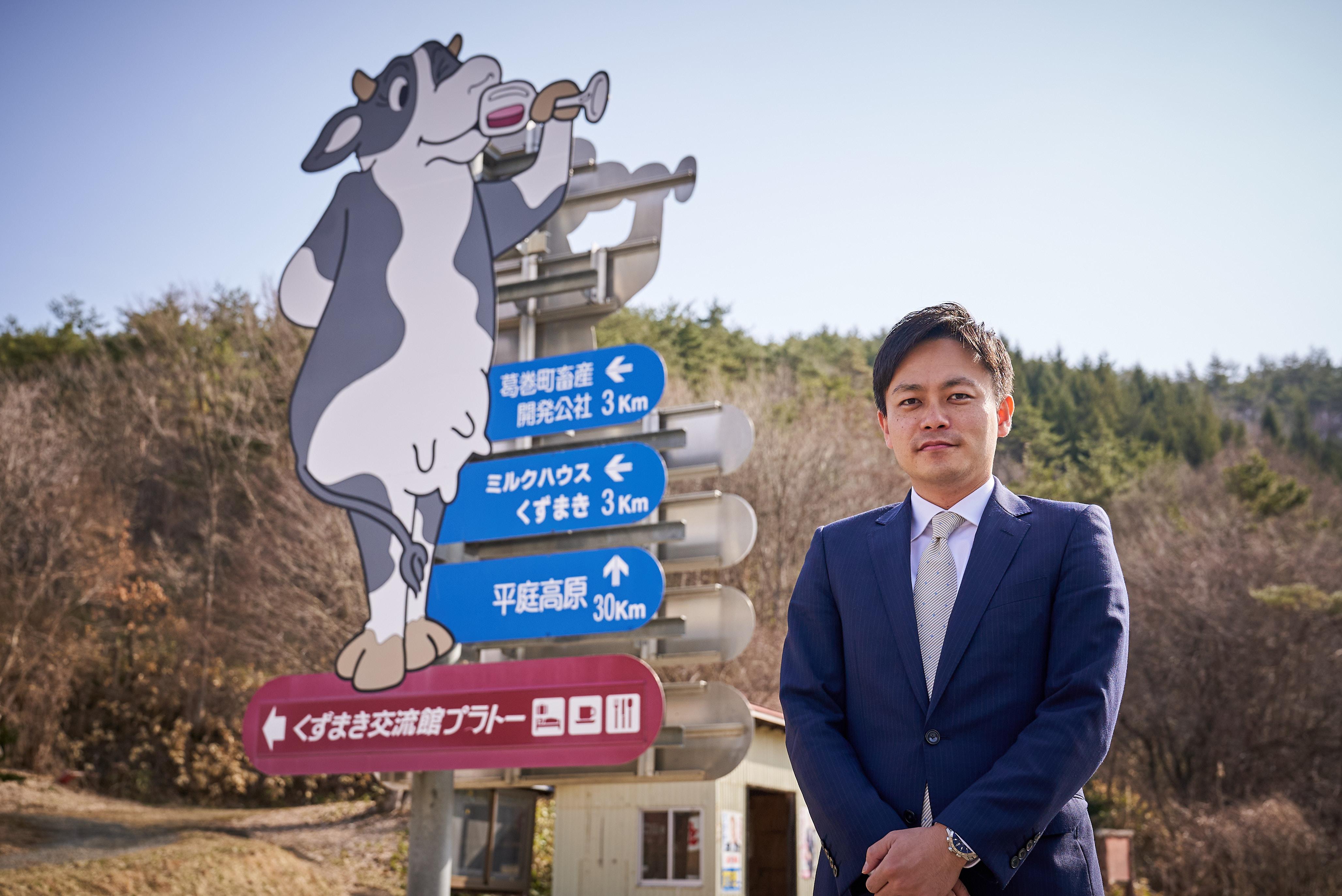
A town that has more cows than people
About one-and-a-half hours by car from JR Morioka Station, nestled in the mountains of Iwate Prefecture where there are no railway lines, lies Kuzumaki Town. With a human population of approximately 5,800 and a bovine population of approximately 11,000, Kuzumaki is truly a “town that has more cows than people.”
Just as is the case in so many other regions around Japan that are suffering the effects of depopulation, over the past 30 years the population of Kuzumaki has declined by more than 40%. Today, approximately half of the remaining population are elderly. A particularly striking comment made by a resident, with a smile, was “60 is young around here!”

In October 2018, with a view to further enhancing “best-in-town” activities, a total of seven Toyota Group companies, led by local dealerships (Toyota Toyopet Iwate Co., Ltd., and Netz Toyota Iwate Co., Ltd.) signed a comprehensive partnership agreement with the town. Adding Iwate Toyota in the group, the town also signed a disaster cooperation agreement with the Toyota Group companies for the lending of vehicles with power supply functions in times of disaster. These and other efforts to improve quality of life for residents and achieve regional vitalization continue to be advanced.
It was here in the Koyase district of this small town that grave news emerged in 2019. The only store in the district had closed down.
In response to this situation, the Toyota Group, led by representatives of local Toyota dealerships, engaged in multiple discussions with the town office, chamber of commerce and local residents, ultimately resulting in the opening of a new store called “Supermarket Kuzumaki.” The building that had housed the recently closed store was put to use and the new store was stocked with products from 11 stores in other districts of Kuzumaki. It really can be seen as the town’s general store, and one that represents the combined efforts of the entire community.
It opens every Saturday and is visited by approximately 30 people. In addition to in-person shopping, it also takes orders by telephone and delivers to customers with limited mobility who have difficulty shopping for themselves.
Mayor of Kuzumaki Shigeo Suzuki says about the significance of the opening of the supermarket as follows:
“This part of town has a particularly high proportion of elderly people and there are also many vulnerable people who find it difficult to shop for themselves. The local government would have probably found it difficult to come up with such an initiative on its own, but with the information and knowledge of the people from Toyota, it proved possible to start up the supermarket.
The local residents are all delighted and everyone looks forward to the once-weekly opening day. The local government will also provide our own know-how so that we can continue to ensure even more efficient services.”
On the day Toyota Times editorial team visited, the store was full of customers. It really made an impression to see the staff talking so animatedly with local people.
A woman who runs her own store a 45-minute drive away in another district admitted that she operates at a loss. Even so, she says that what keeps her going is being able to see for herself the joy of her customers. Supermarket Kuzumaki is not just a place to go shopping, it has become a community focal point for interaction and exchange.

So what did CSO Yamamoto feel when he saw this store in operation for himself?
Not recognizing things as being inconvenient
On the day of the visit, the supermarket had received its first requests for delivery service, so Yamamoto accompanied the delivery round to two houses. Two residents who came to their doorstep to pick up the products delivered by car explained how they see the service.
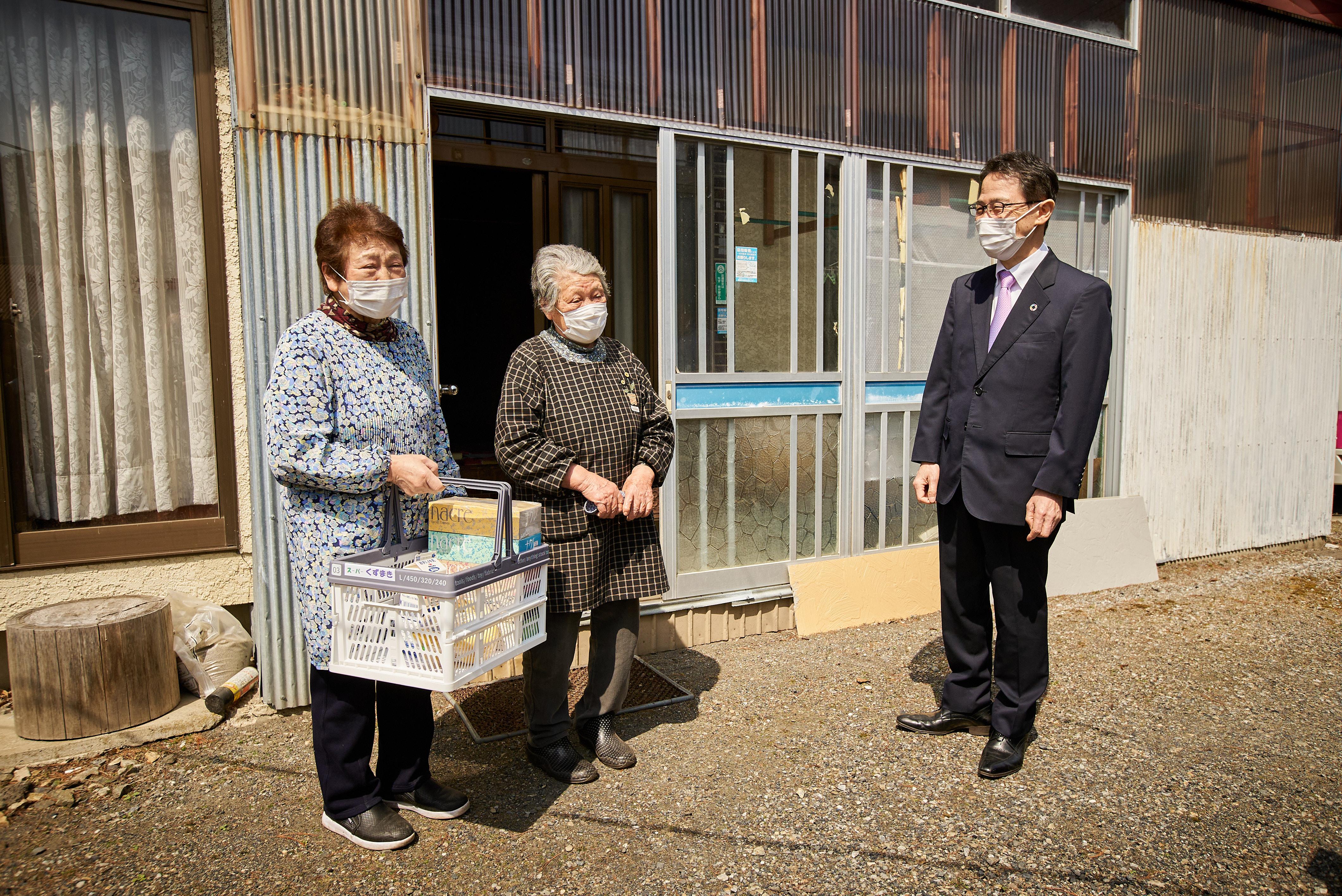
The first person was an 88-year-old lady. Upon receiving the delivery, she expressed her appreciation saying that she didn’t know what she would do when the old store had closed down.
However, as she talked more, an unexpected fact came to light that she doesn’t recognize the inconvenience of her situation as being inconvenient.
She usually travels by bus, and there is only one bus every two hours. Even so, she says, “It’s convenient because we still have a bus.”
At the second delivery address was a 63-year-old man, who didn’t have a car of his own and had exactly the same reaction as the old lady.
For example, if they need to go to a hospital, they are able to time their trip with the bus timetable. However, as it isn’t always possible to predict what time a doctor’s appointment will end, this could mean waiting several hours for the next bus to arrive. To begin with, it is a challenge for a person over 80 to walk uphill to the bus stop, and doubly difficult when it snows.
Wondering whether they really didn’t find things to be inconvenient, Yamamoto asked a number of questions, aiming to hear the real opinions of those in the community.
For example, when he asked whether it would be convenient to be able to order by smartphone and have goods delivered, he was told that the elderly users were unable to operate the smartphone app.
Another question was whether the once-weekly opening was inconvenient, to which the people voiced slight concern at not being able to buy the things they want, when they want them.
No one complained about the inconvenience of travel or transport. Using smartphone to make orders isn’t a convenient option for them. But still, they feel inconvenient not to be able to buy things when they need them.
Listening to these opinions made it a little hard to understand what the challenges facing the community really are and what could be done to resolve them. At the same time, it was not necessarily appropriate to subconsciously assume that this kind of lifestyle would definitely be inconvenient.
The mayor says, “It’s because the people of Tohoku are so patient,” but on the other hand Yamamoto also noted, “My impression is that the people are fitting themselves around an inconvenient situation.” As these people have lived here for so many years, they might have become accustomed to inconvenience in some ways. It is going to take a little more thought and insight to find out what constitutes true inconvenience in a depopulated region.
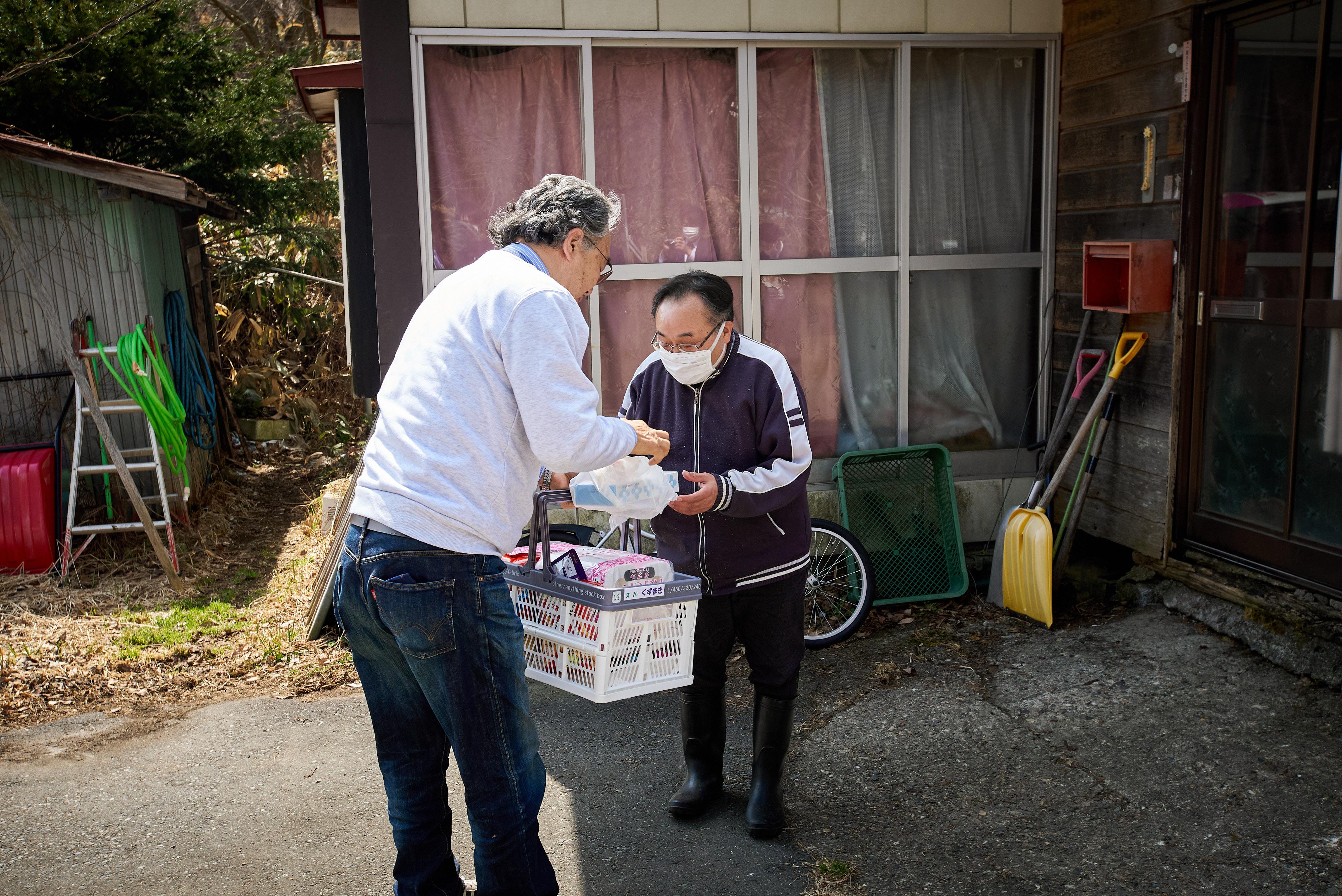
There was something else important to note in what the people said. It was the old lady’s reference to being “lonely.”
In contrast to urban areas, in this region the next house is several hundred meters away. The old lady said wistfully, “There are only cows nearby and no other person to talk to.”
Hearing these stories seemed to energize Yamamoto, who said, “It really should be easier to live here. I want to do something to help.”
Why the delivery service remains unused
This is a place where the last shop had closed and without using a car or bus it would be impossible to go shopping. It was remarkable, therefore, to hear the number of delivery orders that had been received to date: precisely zero.
The two people mentioned above were the first users of the delivery service. To the question on why it has been that way, many people’s response was, “We want someone to talk to.” This answer chimes with the fact that the once-weekly opening of Supermarket Kuzumaki has become a focal point for community interaction.
The old lady who received the delivery wiped tears away from her eyes as she showed appreciation for the opportunity to chat with the delivery staff from Supermarket Kuzumaki rather than the goods themselves. The staff said, “One of the major roles of delivery is to chat directly with the elderly residents who live alone.” Even casual conversations and contact with people can be a great support.
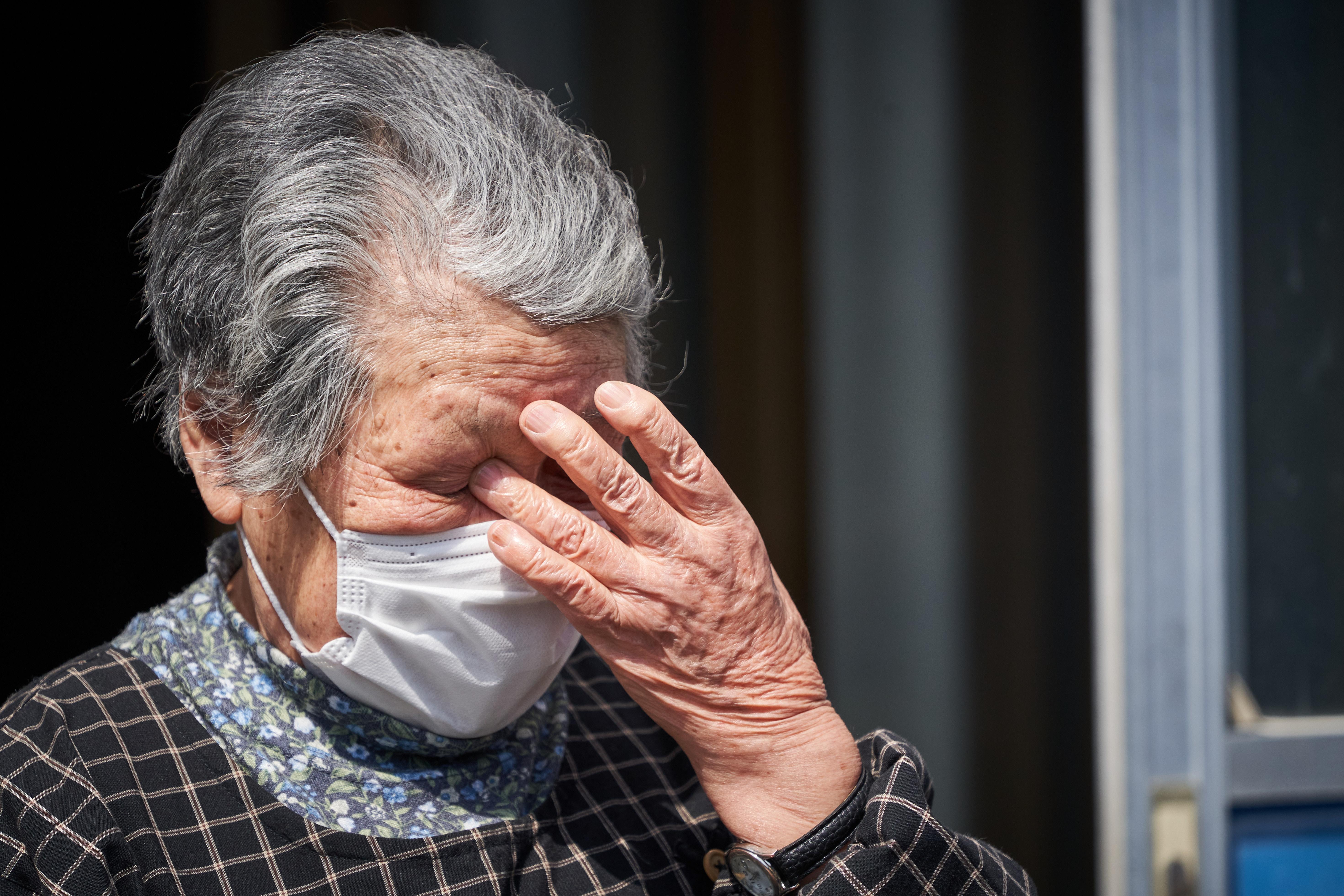
In urban areas, you only have to step outside your house to find other people. You can stop to talk to people who live in the same apartment block, or interact with staff in the convenience store. The human contact that is commonplace in urban areas is extremely precious in depopulated areas with small populations.
The notion that as technology progresses it might one day be possible for robots to make house-to-house deliveries automatically and that such a development would enhance convenience may not be true in depopulated areas. In Kuzumaki, it seemed necessary to think about ways to retain the element of human contact in delivery services.

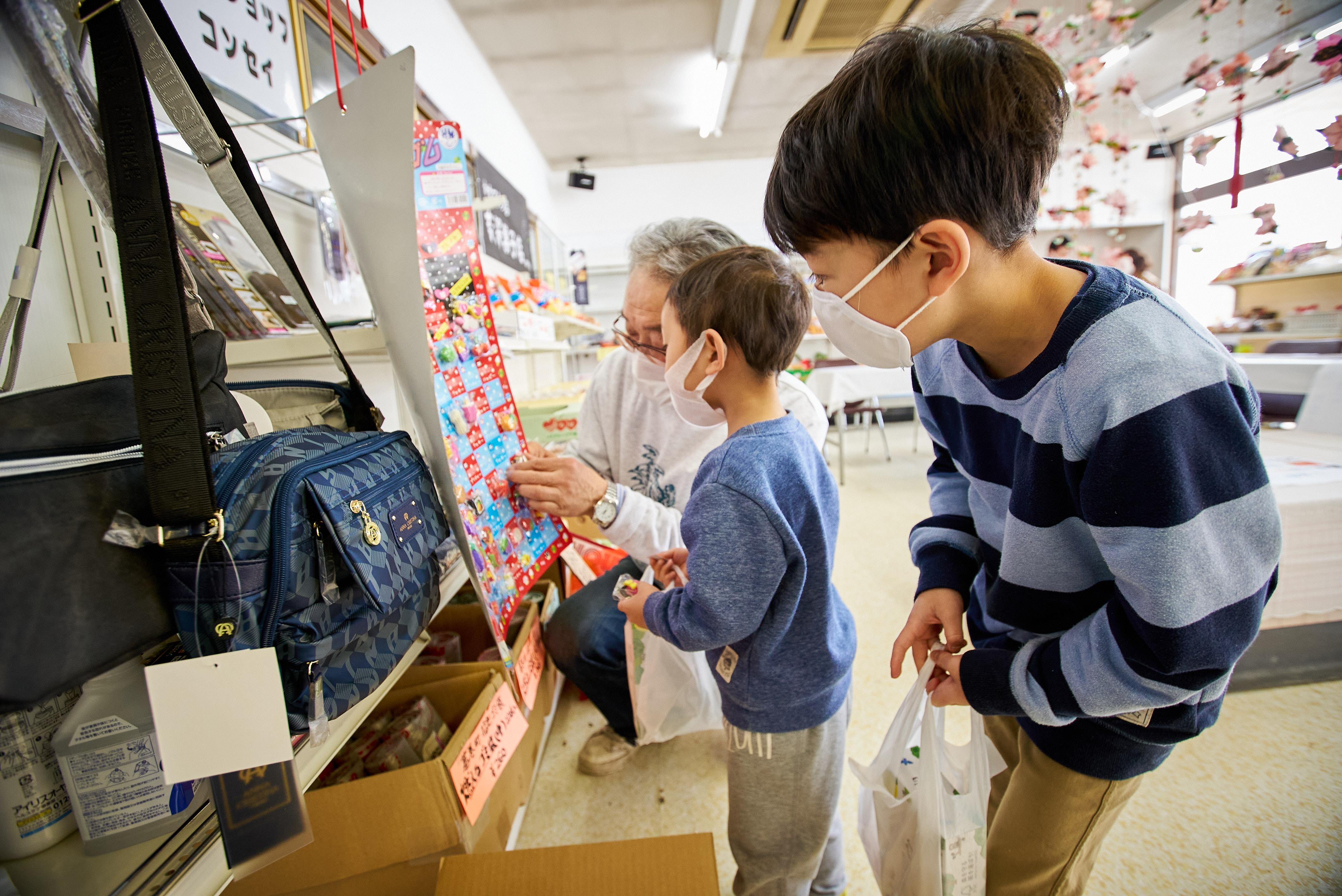
Convenience mustn’t be imposed
Realizing the reality of the situation, Yamamoto says, “We can’t simply attempt to impose ‘convenience’ on people.”
Even services that we might think are good will not be used until they first match the lifestyles of local residents. Unless it is actually used, the service won't solve anything.
People’s needs may change depending on the timing and situation, including on days of bad weather or when people with limited mobility need to do some shopping. With a “one-size-fits-all” approach, people will not use the service. Just as each person’s lifestyle is different, so too is it crucial to consider the diversity of the services that are needed in the town.
Needless to say, activities designed to support the town should not take away the jobs of the town’s people. It is necessary to make the most of local assets while filling in any gaps. To do this, the most important thing is to discuss everything carefully.
The importance of non-temporary support
It would be meaningless if support for the town only ended up being temporary. During the visit Yamamoto referred to “sustainability” frequently.
Yamamoto
Unless we continue what we do, we can’t fulfil our responsibility as a company.
Ten years have passed since the Great East Japan Earthquake and during that time, in terms of automobile production, we have made a small contribution to the Tohoku region. However, our efforts do not stop there. What is of utmost importance is for us to go on doing all that we can for the region and for the reconstruction of Tohoku. There is no ultimate “goal.”
Automated driving (for the sake of a town’s livability) is one of the possibilities, and the things that we need to do keep on expanding. That’s why I felt it is important for us to continue our work.
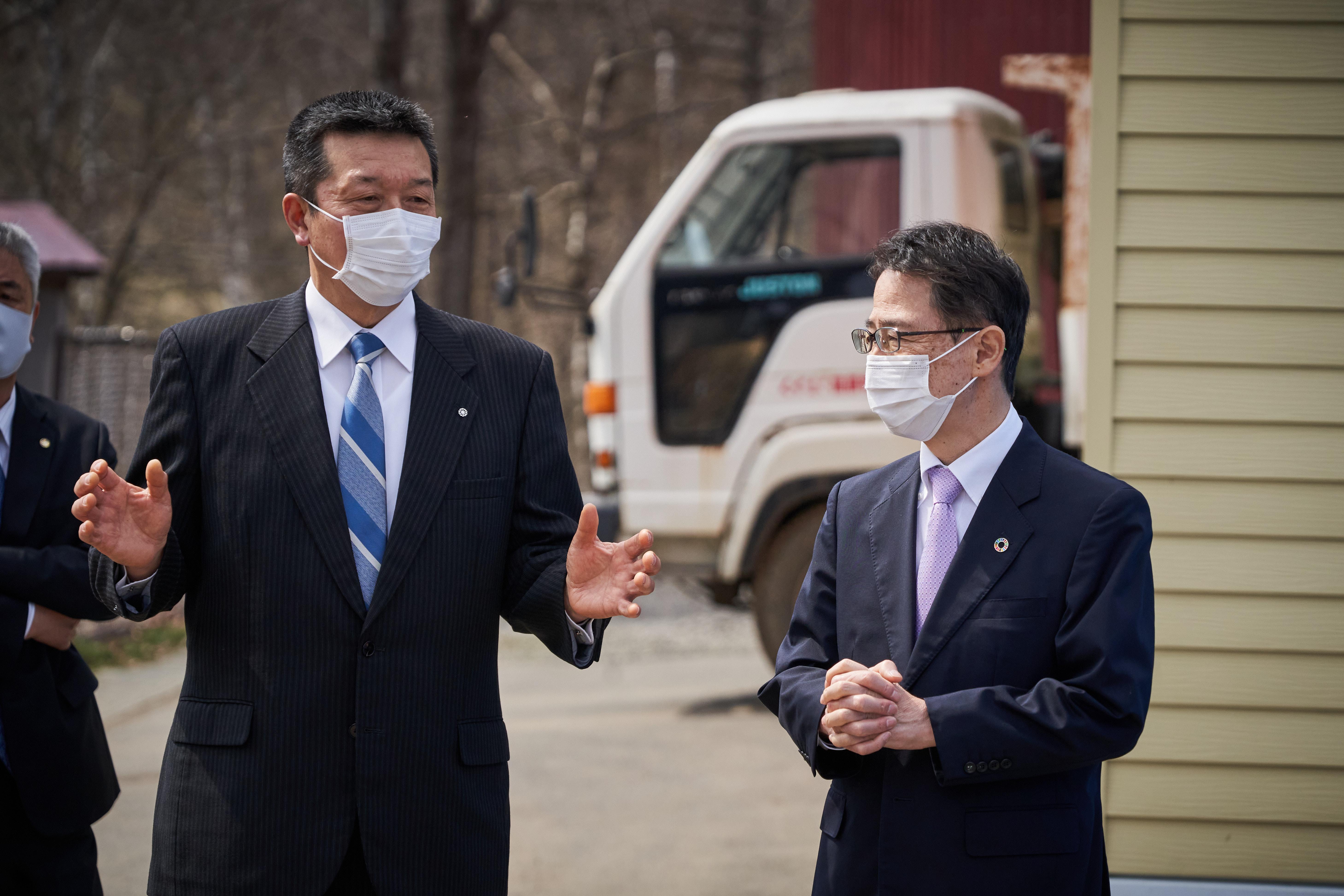
Unless the service becomes self-reliant, it won’t become truly sustainable support either.
This is precisely the same as Akio’s stance on the reconstruction of Tohoku. In the immediate aftermath of the disaster in 2011, Akio moved to establish Toyota Motor East Japan (TMEJ), noting that, “through manufacturing we can work with the people of the region to create the future of Tohoku together,” and “we will develop the manufacturing of Tohoku over the mid to long term.”
Digitalization with a “YOU perspective”
So what can be done not on a temporary basis, but sustainably? When it comes to increasing convenience for the town, the first thought that comes to mind is digitalization.
However, President Masayuki Motomochi of Toyota Toyopet Iwate says, “It’s very difficult for dealerships alone to create something that would be easy for elderly people to use. We very much appreciate being able to engage in initiatives together with Toyota.” President Yoshiyuki Motomochi of Netz Toyota Iwate also has this to say, “There are many elderly people in Iwate, so the important thing is to think of ways to spread digital solutions to those who can’t currently access the digital world.”
This is precisely why Yamamoto considers it to be important to keep initiatives on track. Elderly people cannot be expected to suddenly become digital users overnight. The idea is rather to move in step with users and gradually enable them to feel the added convenience themselves and go on to enhance their comfort levels.
Yamamoto says that this is one of the areas in which Woven City has great potential.
Yamamoto
Woven City is one of the environments to set out and test a vision for the future of mobility.
You can use software to implement simulations of the types of roads you want to build and incorporate as many themes as you like and try them out. Then you can ask the residents (of Woven City) to evaluate them. There will definitely be aspects of Woven City that can be put to use in Kuzumaki too. If we can create a means of short-distance transportation, it can then be applied to various regions.
This prototype city of the future with its advanced technologies has the potential to lead to daily urban life that totally overturns conventional expectations.
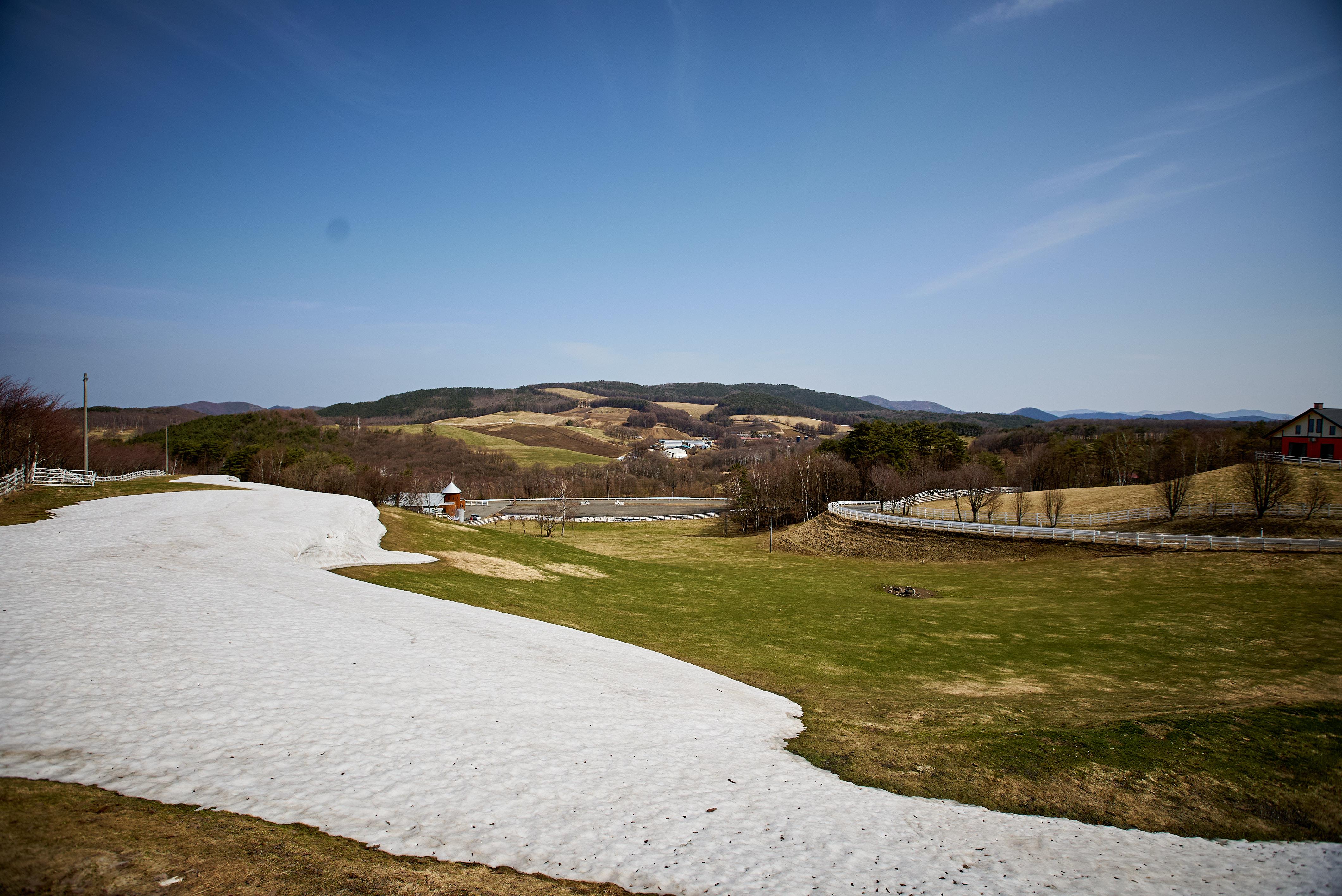
Netz Toyota Iwate President Yoshiyuki Motomochi, who was one of the key figures involved in opening Supermarket Kuzumaki, said the following:
Motomochi
Our relationship with the town will never end, and that’s exactly why we have to cherish our links. We experienced many challenges before the opening of the supermarket. If we don’t stay close to the people of Kuzumaki, it would not be possible to make progress.
This is what makes it so important to always remember a so-called “YOU perspective.”
It is vital to think from the perspective of the other person in order to provide truly useful support, rather than merely imposing convenience on people.
There are also things that local governments cannot accomplish alone, and equally so, there are things that companies cannot carry out on their own. What is important is to make onsite visits, listen to the many real voices of the townspeople, and work hand in hand to solve challenges together.
So why did everyone go through so much trouble to start up Supermarket Kuzumaki? The mayor of the town and the president of the dealership all gave the same answer, “We just want to make the town filled with smiles.”
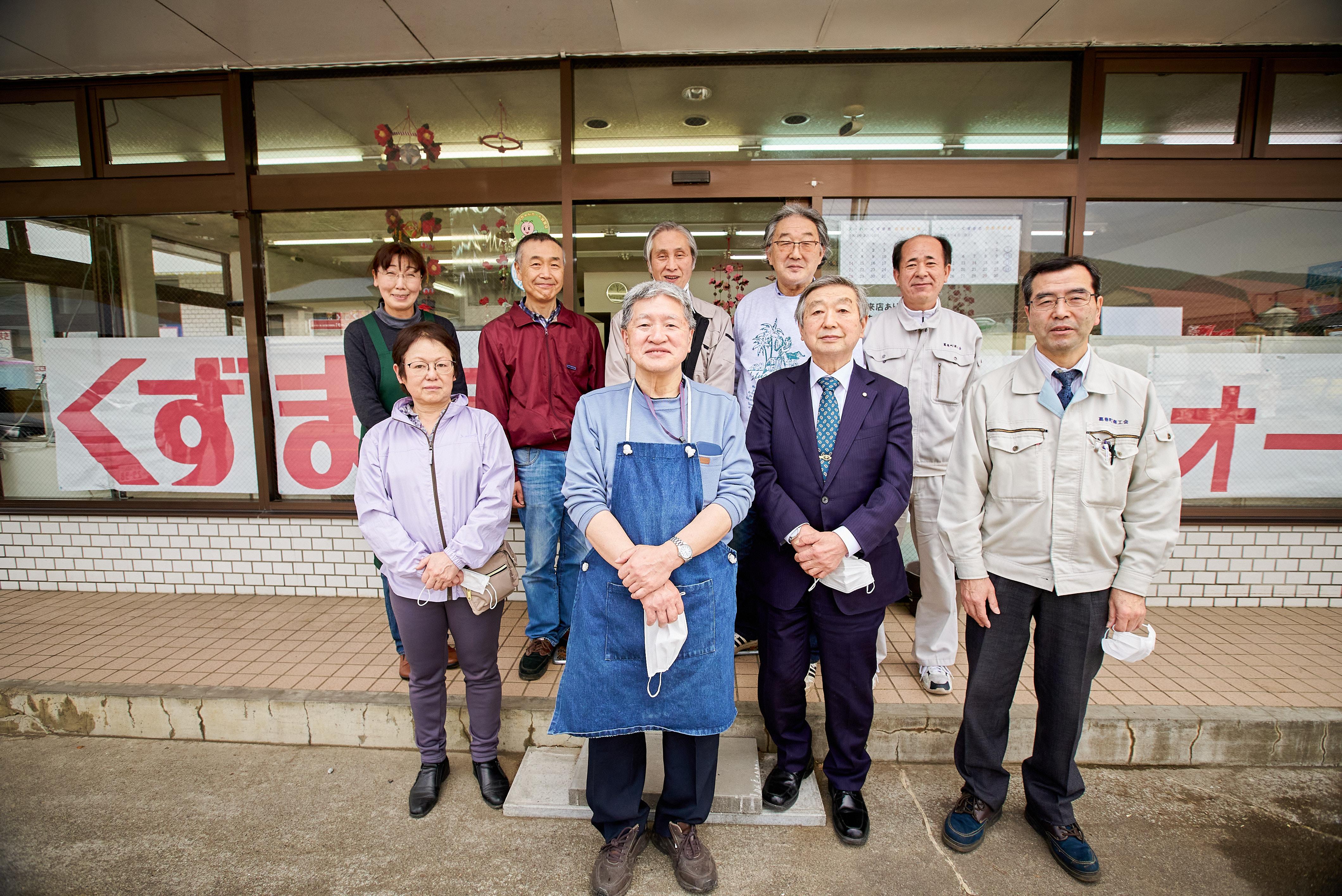
Aiming to produce happiness for all senior citizens
The old lady who cooperated with the interview (as described earlier) kept saying, “thank you” over and over again, and kept waving to the car for a while as the Toyota Times editorial team left her house.
Thinking about the possibilities of mobility means thinking about the happiness of the people of the town. A definitive answer has yet to be found. However, it is certain that there are many more things that mobility can do to help people with their daily problems.
“Producing happiness for all” does not mean the creation of a uniform kind of happiness. In line with genchi genbutsu (going to the source to get the facts), one must see, hear, and understand the situation with their own eyes. What is more, the goal is to provide services that are truly useful to each individual and lead to their happiness.

Finally, Yamamoto spoke about the origins of the Toyota Production System (TPS) that Akio so often refers to.
Yamamoto
The origins of TPS lie in the concept of “making someone’s work easier.” We would like to think about what we can do to help residents by remaining close to them and seeking to clearly understand the challenges they face.
IT and ICT are simply a means to an end, and we must consider how to use them. I believe that if we focus on the idea of TPS, then there could be many things we could help with. The only way to do this is to stay close to the residents and listen to what they have to say.
I believe that all kinds of good examples will emerge, not just those from Toyota, but from IT businesses too. We must share these ideas with everyone and create a forum for thinking together about the best proposal for each region.
The launch of the supermarket was not a goal, it was a starting point. The answer to solving the town’s challenges lies not in the development of technology, but in the hearts of the town’s people.
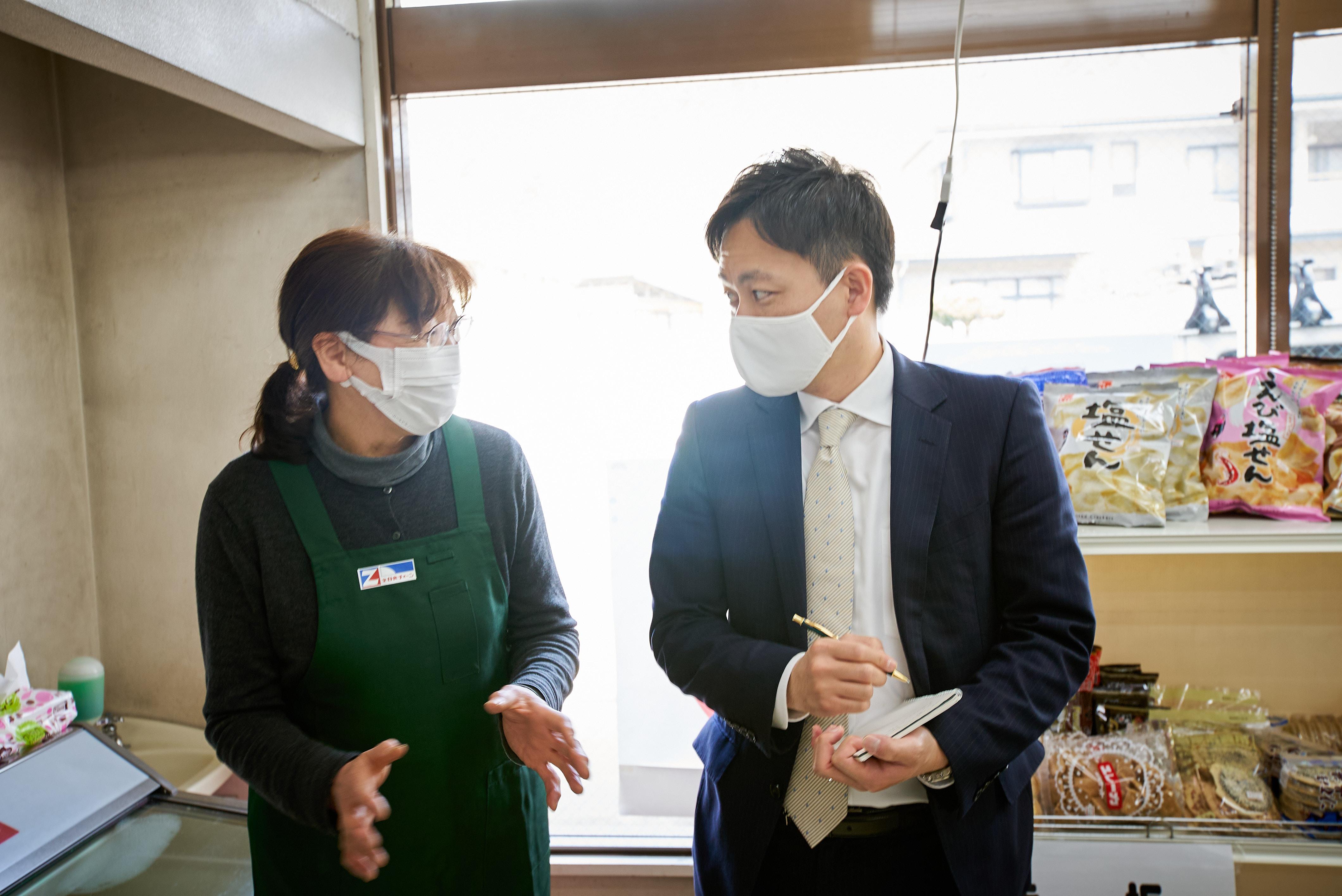
This visit made it clear how difficult it is to solve the challenges being faced in depopulated areas. Local stores are being forced to close, causing trouble and worry for people. There is also a misconception that if people reach out to them, local residents will simply respond acceptingly.
Even in what may appear to be the same kinds of depopulated areas, problems differ depending on the region and the people themselves. Generalizing all problems into one and simply promoting the convenience enjoyed in an urban city, nothing will ever be resolved. In this respect, the Supermarket Kuzumaki initiative represented a big step forward that was finally achieved by taking the time to get to know the local people.
Yamamoto is working on such advanced areas as software and MaaS (Mobility as a Service) at Toyota. However, there were no opportunities for him to actively promote the appeal of these advanced technologies on this visit. Of course there will come a time in the future when such technologies can be useful, but the first thing to do is to move closer to the local community, following through with the values of genchi genbutsu to identify what the real problems are. This is the most practical way to find a real solution.

